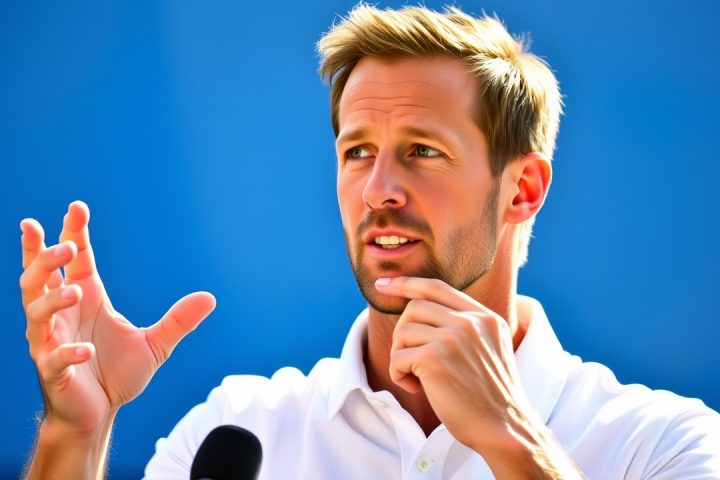Roger Taylor: A Tennis Icon
In the world of tennis, few figures stand out quite like Roger Taylor, the handsome and talented player who made his mark at Wimbledon during the late 1960s and early 1970s. Taylor, who reached the semi-finals three times in 1967, 1970, and 1973, had a remarkable career both on and off the court. He reflects fondly on the role he could have played in cinema, once expressing,
“Everyone fantasizes about being James Bond,”
revealing a whimsical connection between his life as a tennis star and the cinematic spy icon.
A Self-Taught Player’s Rise
A self-taught player raised on the public courts of Sheffield, he burst onto the scene at just 25 years old, drawing attention not only for his skills but also for his looks—often described as the quintessential matinee idol of British tennis, echoing the appeal of contemporary stars like Jack Draper.
The Bond Connection
At a pivotal moment in his career at the Queen’s Club final in 1967, an encounter with the wife of a screenwriter unexpectedly placed him in the running to replace Sean Connery as James Bond, a role eventually filled by George Lazenby. The casting call was intimidating, featuring legendary producers Cubby Broccoli and Harry Saltzman. Though Taylor practiced the iconic line,
“The name’s Bond, James Bond,”
in front of a mirror, he never had the chance to deliver it. He ultimately decided against pursuing the opportunity further, influenced by his then-wife, Frances, who disapproved of the idea of becoming a Bond wife.
Health Challenges and Dedication
As he approaches his 84th birthday, Taylor maintains an impressive physique, characterized by a powerful forearm, albeit while managing significant health challenges, including a diagnosis of prostate cancer and recently diagnosed amyloidosis. Despite these hurdles, Taylor has remained dedicated to fitness, routinely visiting the gym.
Wimbledon and a Players’ Strike
In 1973, Taylor faced a significant career crossroads tied to a players’ strike that threatened the Wimbledon tournament. The dispute arose from increasing tensions between players and the All England Club administration. Upon witnessing the response to fellow player Niki Pilic’s ban for refusing to compete in the Davis Cup, Taylor grappled with whether to participate in Wimbledon during the boycott. Ultimately, his love for the tournament, which felt inherent to his identity as Britain’s top player, propelled him to compete, even as the atmosphere was tense and divided. His memoir poignantly reflects on this tumultuous period, shedding light on the complex dynamics between tennis players and tournament officials.
A Lasting Legacy
Despite the challenges he faced during that summer, including a heartbreaking semi-final loss to Jan Kodes under less-than-ideal circumstances, Taylor’s legacy endures. He recalls vividly the frustrations of the match being suspended due to darkness, a theme emphasizing the sometimes harsh realities of the sport.
Reflections on Exclusion
Throughout his life, Taylor has felt a sense of exclusion from the upper echelons of tennis society, recalling snubs from influential figures like commentator Dan Maskell. His later role as the Davis Cup captain in the early 2000s was a notable achievement, yet he has often noted the lack of recognition for his contributions and accomplishments within the tennis community. Taylor’s candid reflections convey a deep-rooted affection for Wimbledon, which he describes as ingrained in his being, yet marked by a bittersweet acknowledgment of the complex politics present within the sport.




